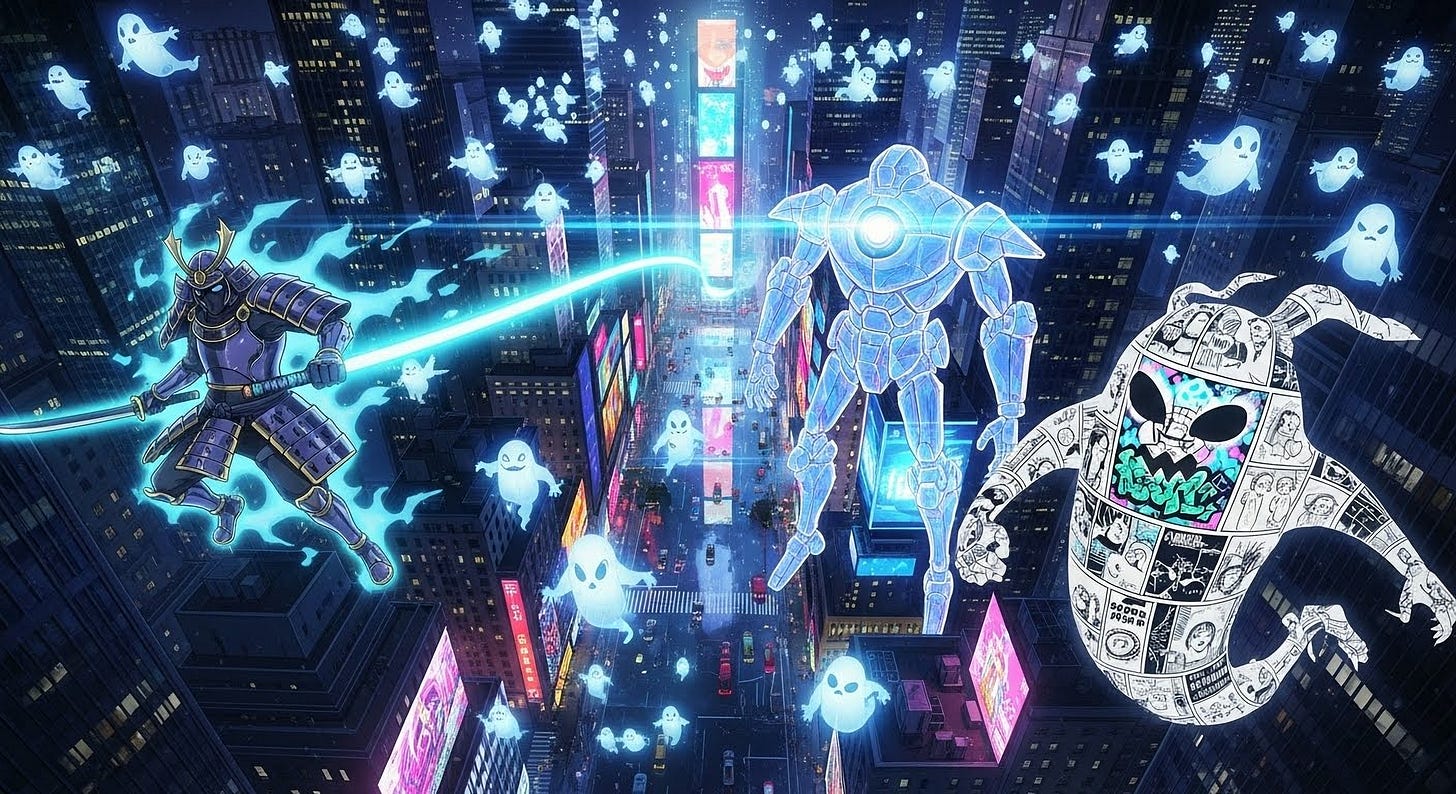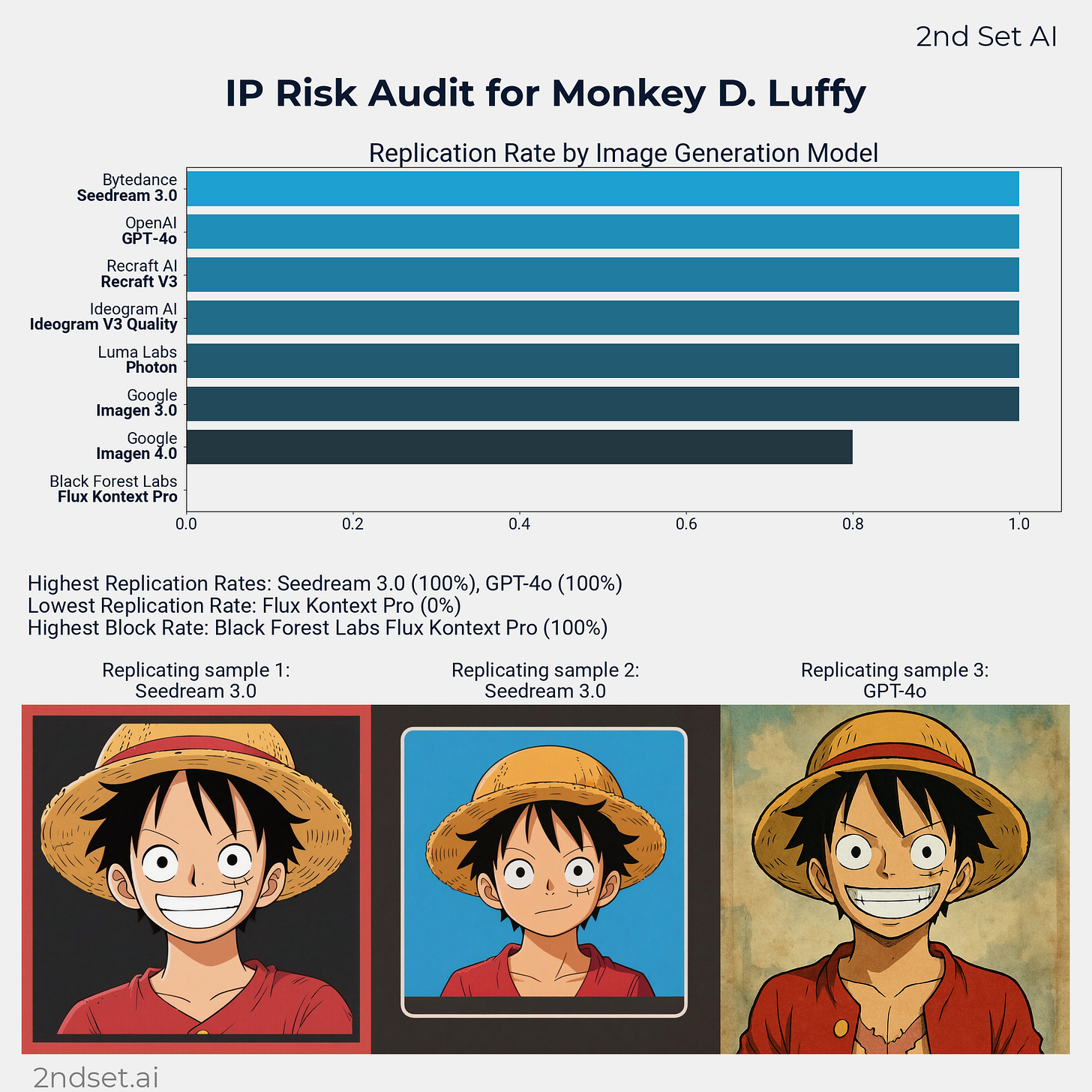Anime NYC is just around the corner, and the entire world of manga and anime is about to descend on Manhattan. It's a celebration of original creation. It’s also the perfect time to talk about the ghosts in the machine.
I'm seeing digital ghosts. They are the spectral, unauthorized fingerprints of intellectual property that haunt the massive generative AI models we’ve all been hearing about. These models were built on a simple, brutalist philosophy: take everything. Scrape the web, absorb the art, ingest the IP. The result is a powerful tool, but one that’s fundamentally compromised.
Auditing IP
At 2nd Set AI, we've been thinking about this problem a lot. As a service to the creative community, we ran a series of IP Risk Audits (IRAs) to see just how deep the haunting goes. We pointed our diagnostics at a broad swath of iconic characters from different genres, countries, and eras. Anyone can run these same audits for free on our website to see for themselves. The results show a system fundamentally riddled with other people's work.
Shonen
The haunting is deepest with the titans of Shonen manga, the globally recognized faces of the industry. These characters are cultural bedrock, and the models know them intimately.
The Founding Fathers
Our IRA for Monkey D. Luffy (One Piece) came back with a "SIGNIFICANT" risk rating. The same was true for Son Goku (Dragon Ball) and Naruto Uzumaki. With decades of content, their digital footprint is colossal. Their ghosts aren't just present; they are foundational pillars of the machine's visual library. This extends to other long-running hits like Edward Elric (Fullmetal Alchemist) and Jotaro Kujo (Jojo's Bizarre Adventure).
The New Guard
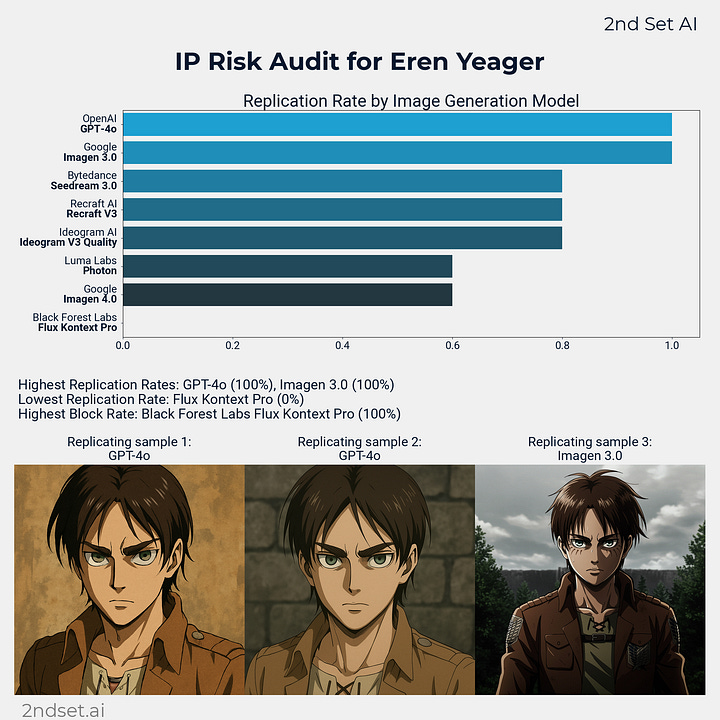
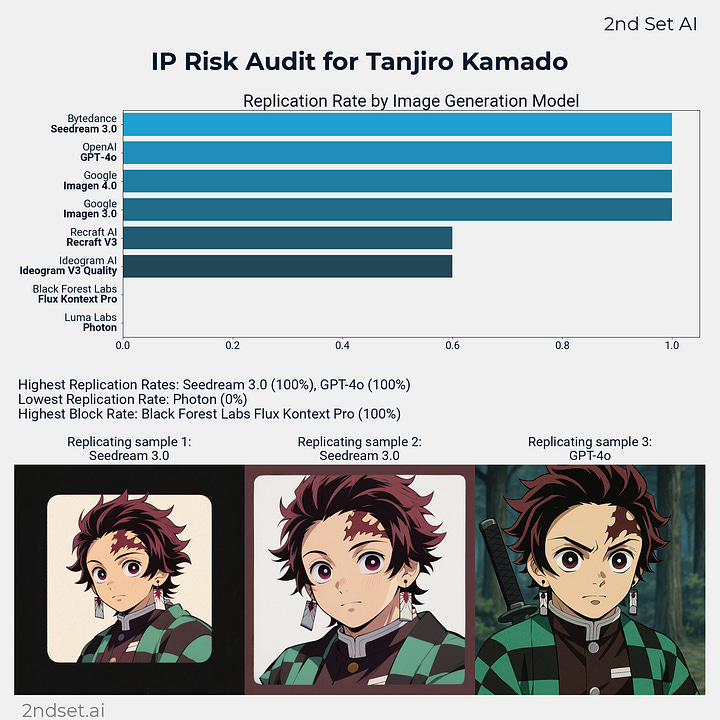
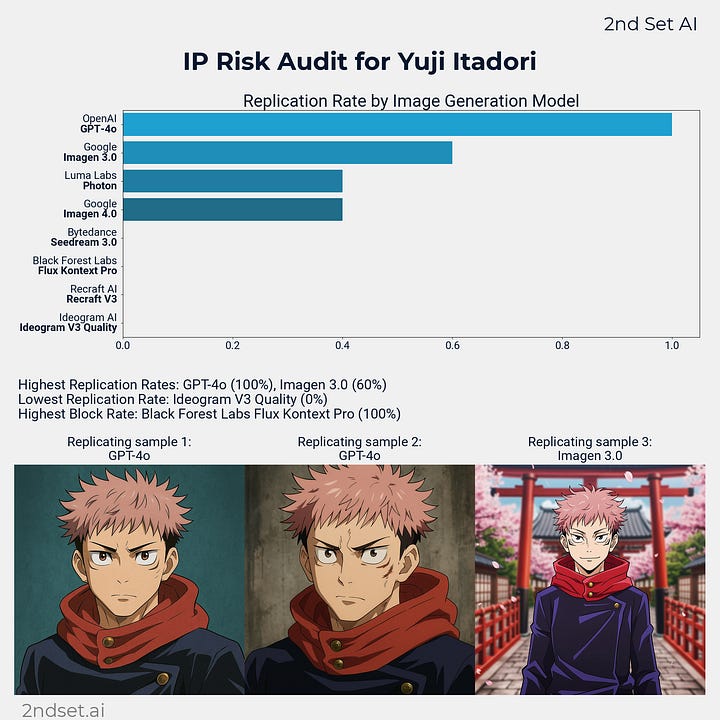
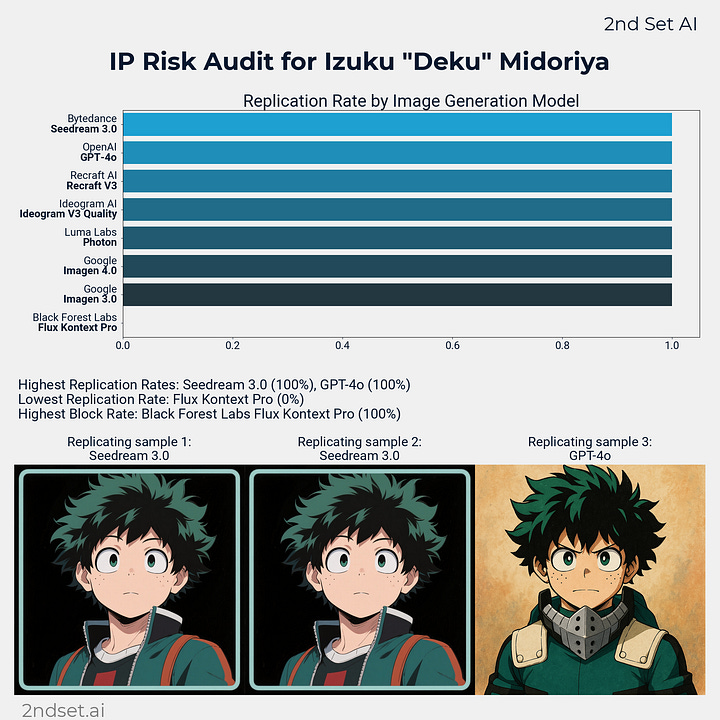
This isn't just a legacy problem. The new generation of heroes who exploded in popularity during the AI boom are just as compromised. Izuku "Deku" Midoriya (My Hero Academia), Yuji Itadori (Jujutsu Kaisen), and Tanjiro Kamado (Demon Slayer) are all summoned with near-perfect fidelity. Even Eren Yeager (Attack on Titan), a darker, more complex protagonist, is perfectly rendered by the models.
Beyond Shonen
This problem doesn't care about your target demographic. We deliberately audited across different segments and found the infestation crosses every line.
Female Icons, from Shojo to Seinen
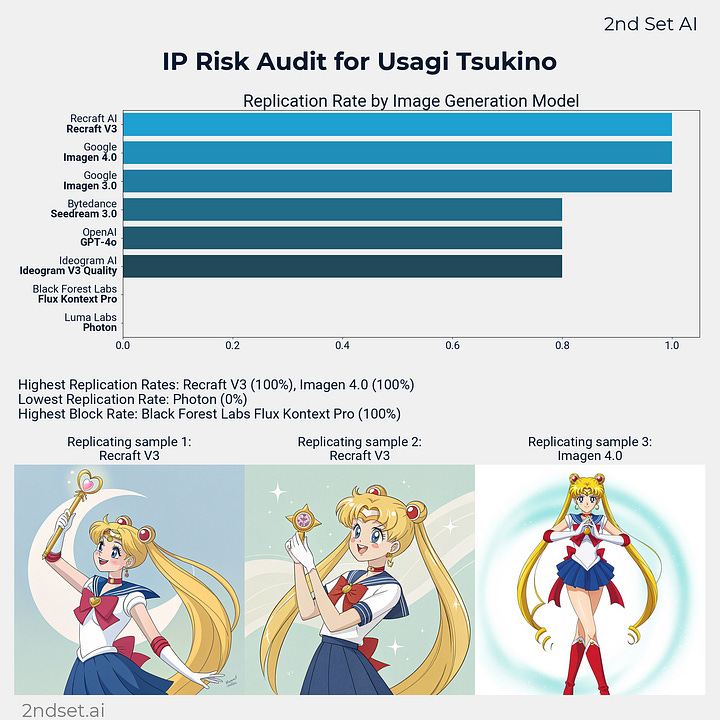
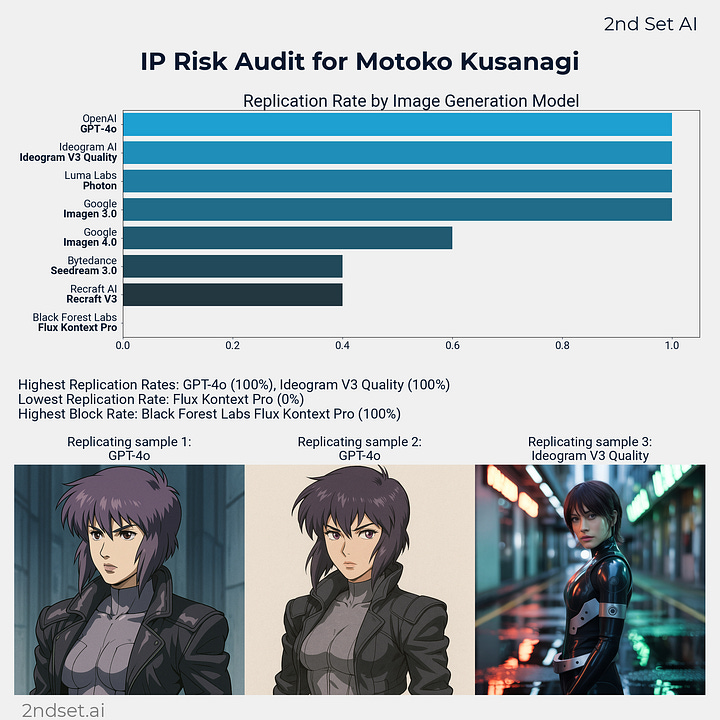
We found that classic Shojo royalty like Usagi Tsukino (Sailor Moon) is just as easily replicated as a foundational Seinen icon like Motoko Kusanagi (Ghost in the Shell). The models are genre-agnostic, having scraped the passionate fan art of Shojo and the gritty aesthetic of cyberpunk with equal efficiency.
Cross-Media Contamination
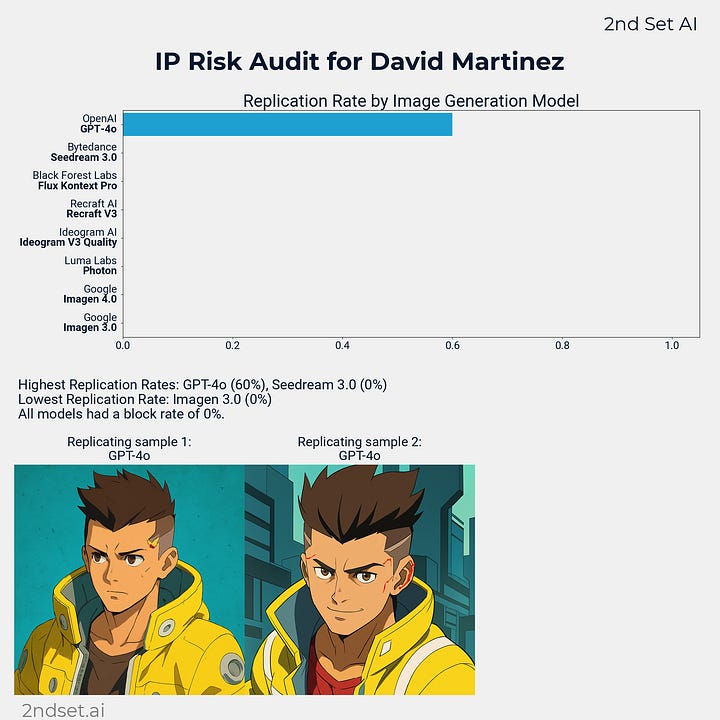
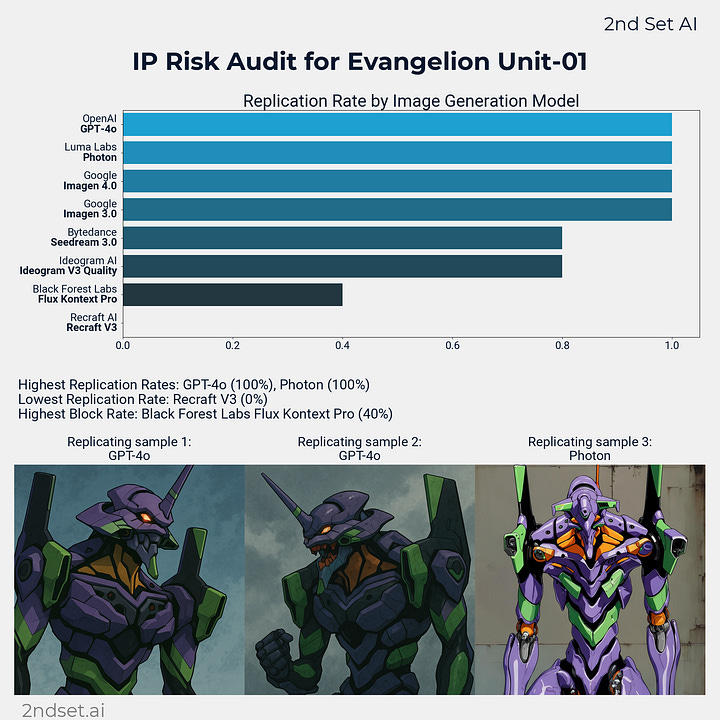
IP is fluid, and the models reflect that. We audited David Martinez from Cyberpunk: Edgerunners, a character from a Japanese/Polish-produced anime based on a Polish video game. The machine knew him perfectly. This highlights a critical risk. The training data creates a complex web of infringement across media types and national borders. Even non-humanoid IP like Evangelion Unit-01 is captured flawlessly.
The Digital Native
Perhaps the most modern example is Mori Calliope, a VTuber from Hololive. Her IP was born on the internet. Her entire existence is a stream of digital content, including concerts, art, and clips, making her the perfect food for a web scraper. Her high replication rate signals a new frontier of risk.
Why Off-the-Shelf AI Fails Creators
The legal risk is obvious. But the operational problems are even worse. The fact that a model can generate Naruto is not a feature. It's a bug that reveals a fundamental flaw. For serious IP holders, these general-purpose models are unusable, and here’s why:
First, there’s Fan Art Contamination. These models aren't trained on pristine, official style guides. They’re trained on the chaotic, brilliant, and utterly non-canonical world of fan art. They learn the fan ships, the alternate costumes, and the stylistic interpretations of the community. For a studio trying to maintain brand integrity, this is poison. You get a character that is an echo of a thousand different opinions, not the ground truth of your IP.
Second, Character Designs Evolve. A character isn't a static image. They're a living asset whose design changes over time. A character's hair, clothes, and overall appearance can change dramatically from one season to the next. The art style itself shifts between the original manga, the various anime series, and the video games. A public model, trained on this entire messy history, can't distinguish between these canonical versions. It mashes them all together to produce a generic, "average" character that is accurate to no specific era, making it worthless for professional production.
The Future of GenAI for Publishers
The solution isn't a "cleaner" general model. It's a completely different approach. IP holders don't need a machine that knows a little bit about everything. They need a platform that knows everything about their universe and nothing about anyone else's.
The only real answer is a platform built to understand brand IP from the ground up, designed to generate with:
Accurate Grounding: A system trained on your official brand bible, your style guides, and your canonical assets, not the internet's messy interpretation.
Perfect Control & Full Consistency: The ability to generate your IP with perfect consistency across panels, shots, episodes, and books. You need Season 3 of your character, and you need them to look the same in every single frame.
This leads to the most critical use case, one that general platforms will never support: developing new IP.
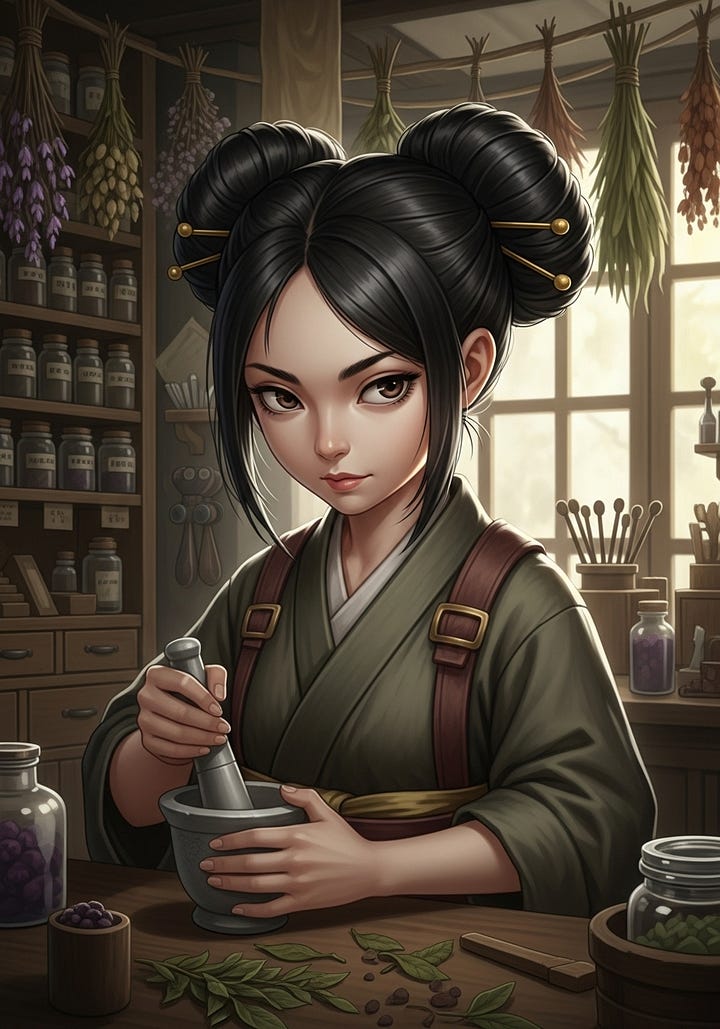
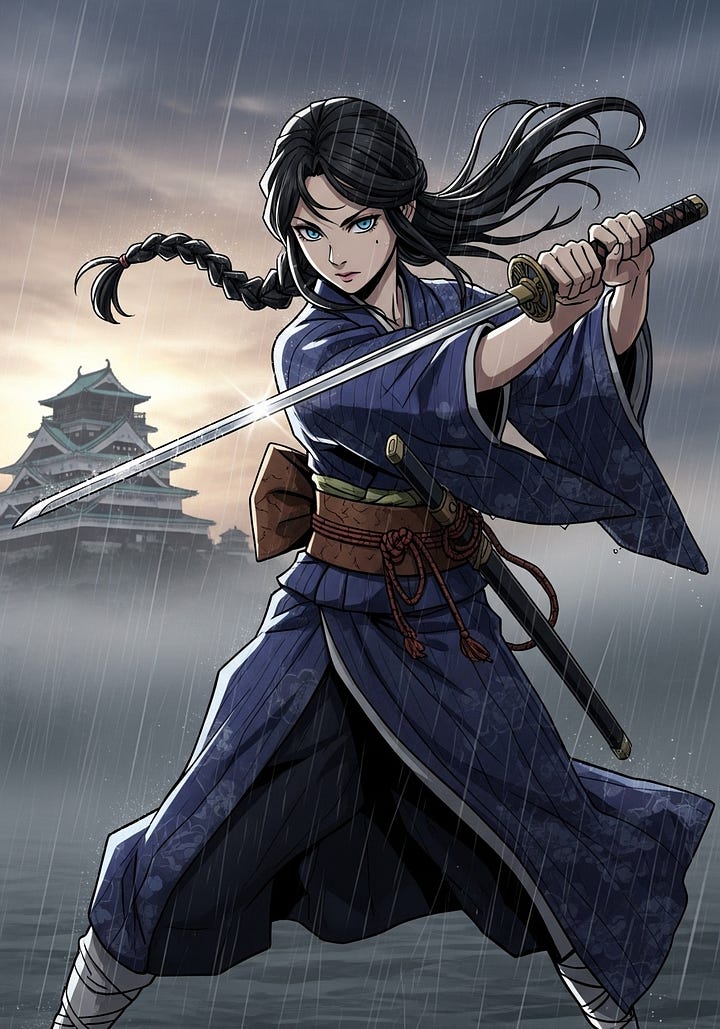
Our audits found that Maomao from The Apothecary Diaries and Mizu from Blue Eye Samurai showed 0% replication. They're too new. This reveals a fundamental truth about public models: they can only reflect what they've already seen. They are vast archives of the past, incapable of genuine creation because their knowledge is based entirely on data that has already been scraped. You cannot ask a general model to generate a character it hasn't already seen a million times on the public internet, because it has no mechanism to learn your specific, private vision.
A specialized platform must operate on a completely different principle. It has to be built to learn. It needs a level of creator-specific understanding, an ability to ingest your proprietary character sheets, style guides, and key art to learn this new design. This allows creators to build new characters, settings, and entire franchises within a secure, generative sandbox. It's a partnership where the machine learns directly from you, not from the internet, well before anyone else in the world sees the final product.
The future of creative IP isn't about fighting a defensive war against infringement. It’s about going on offense. It’s about giving creators tools that are laser-focused on their worlds, both the ones that exist and the ones that are yet to be imagined.
If you’re interested in bringing your creative vision into the world of genAI, we’d always love to connect.




